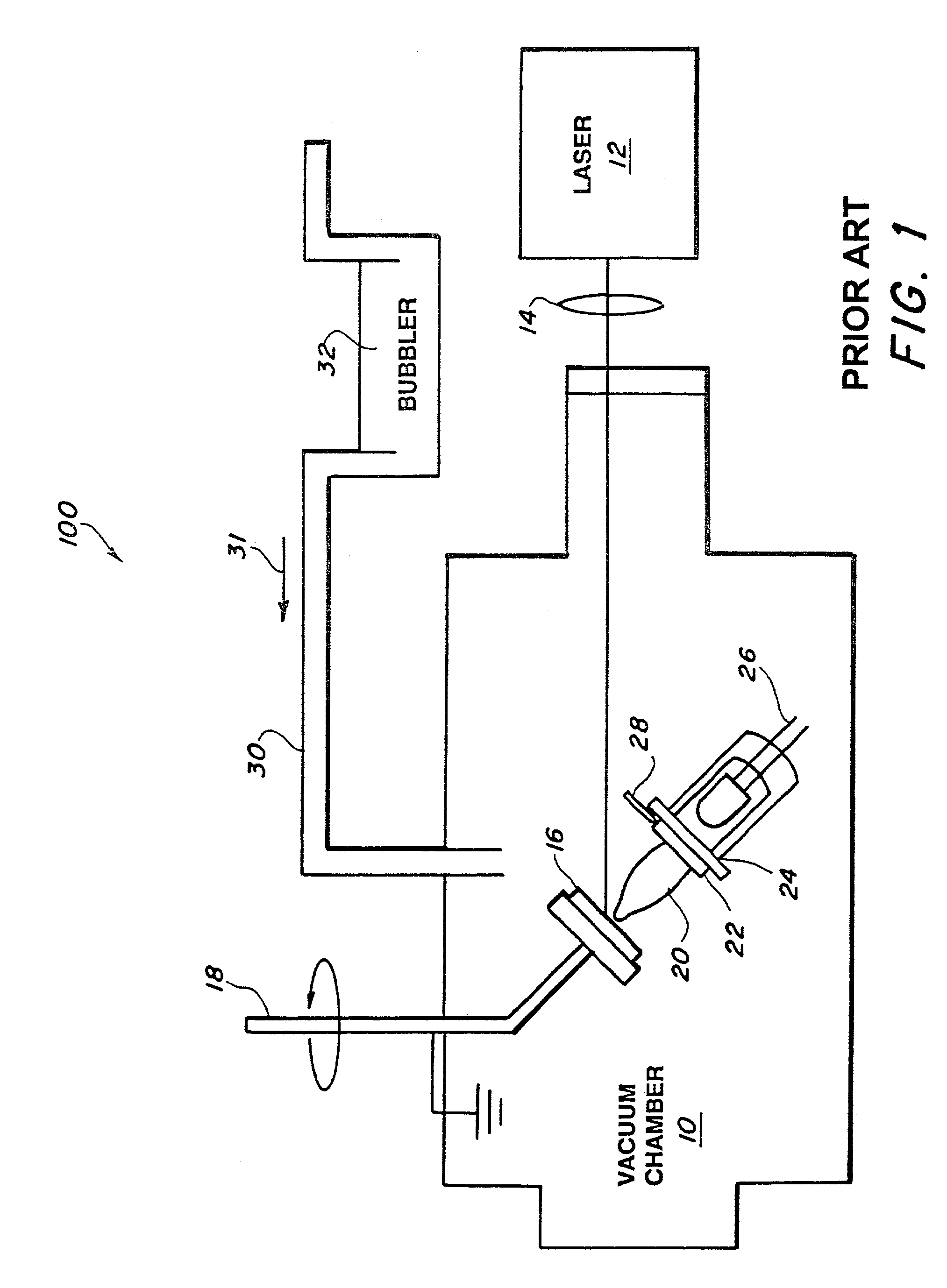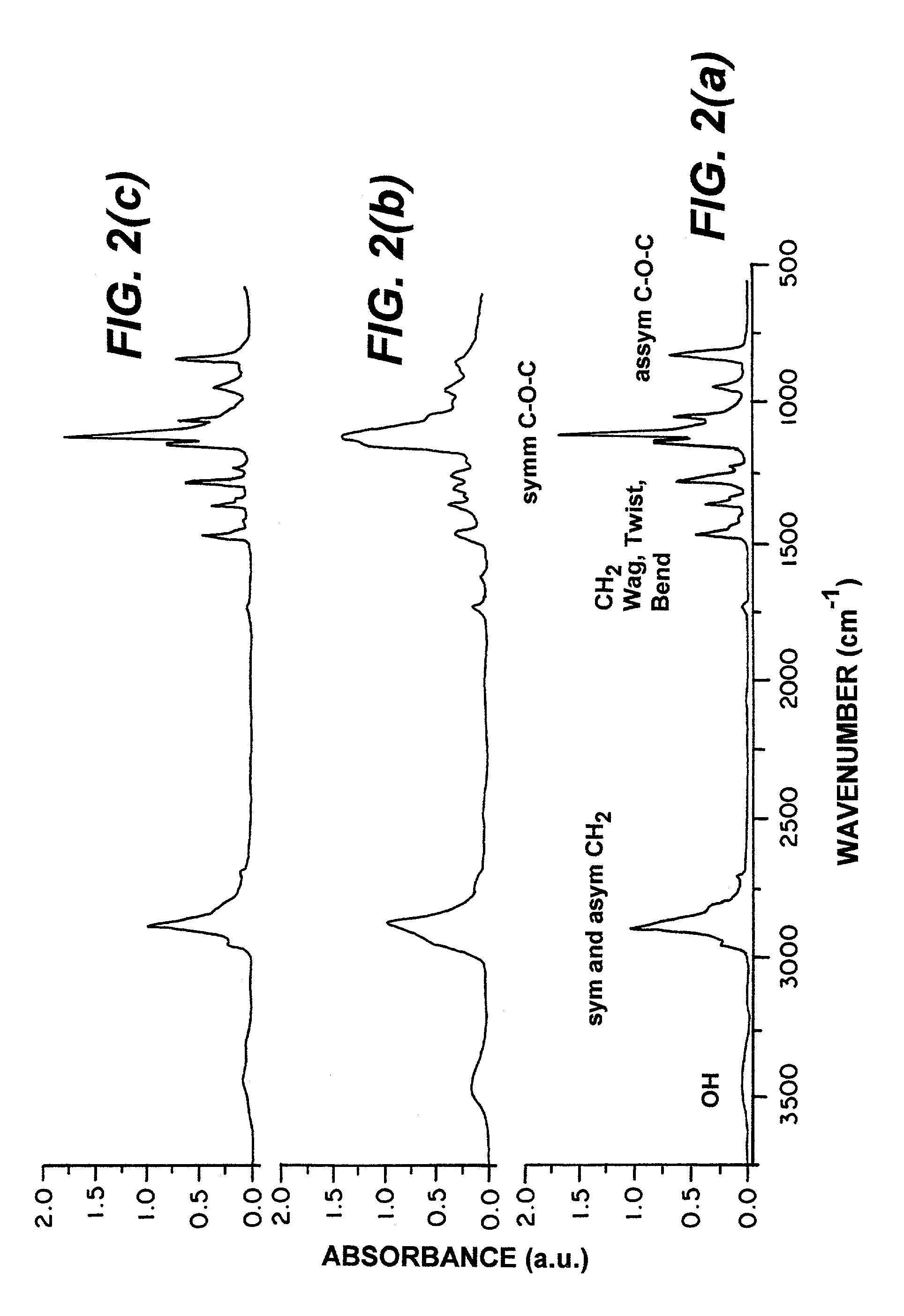Deposition of thin films using an infrared laser
a technology of infrared laser and thin film, which is applied in the field of thin film deposition using infrared laser, can solve the problems of low laser repetition rate, chemical modification of polymer, lack of commercially available high-power lasers,
- Summary
- Abstract
- Description
- Claims
- Application Information
AI Technical Summary
Benefits of technology
Problems solved by technology
Method used
Image
Examples
Embodiment Construction
[0023]This invention generally pertains to coating surfaces with a layer of a material which has been transported to the vapor phase using resonant vibrational mode PLD. Deposited thin films can be grown to precise thicknesses ranging from angstroms to microns. This technique can be used for a wide range of materials including polymeric thin film materials for application ranging from electronics to biological sciences. The technique is general and can be extended to all organic, organometallic, inorganic, and biological materials or combinations of materials, particularly in the form of thin films, and to any material which can be transferred to a substrate by vaporizing the target material by resonantly exciting a vibrational mode in the material whereby a vapor plume is formed which is deposited typically in the form of a solid thin film on a substrate. In a preferred embodiment, this deposited solid thin film has substantially the same chemical composition and structure as the t...
PUM
| Property | Measurement | Unit |
|---|---|---|
| sub-atmospheric pressure | aaaaa | aaaaa |
| thickness | aaaaa | aaaaa |
| frequencies | aaaaa | aaaaa |
Abstract
Description
Claims
Application Information
 Login to View More
Login to View More - R&D
- Intellectual Property
- Life Sciences
- Materials
- Tech Scout
- Unparalleled Data Quality
- Higher Quality Content
- 60% Fewer Hallucinations
Browse by: Latest US Patents, China's latest patents, Technical Efficacy Thesaurus, Application Domain, Technology Topic, Popular Technical Reports.
© 2025 PatSnap. All rights reserved.Legal|Privacy policy|Modern Slavery Act Transparency Statement|Sitemap|About US| Contact US: help@patsnap.com



